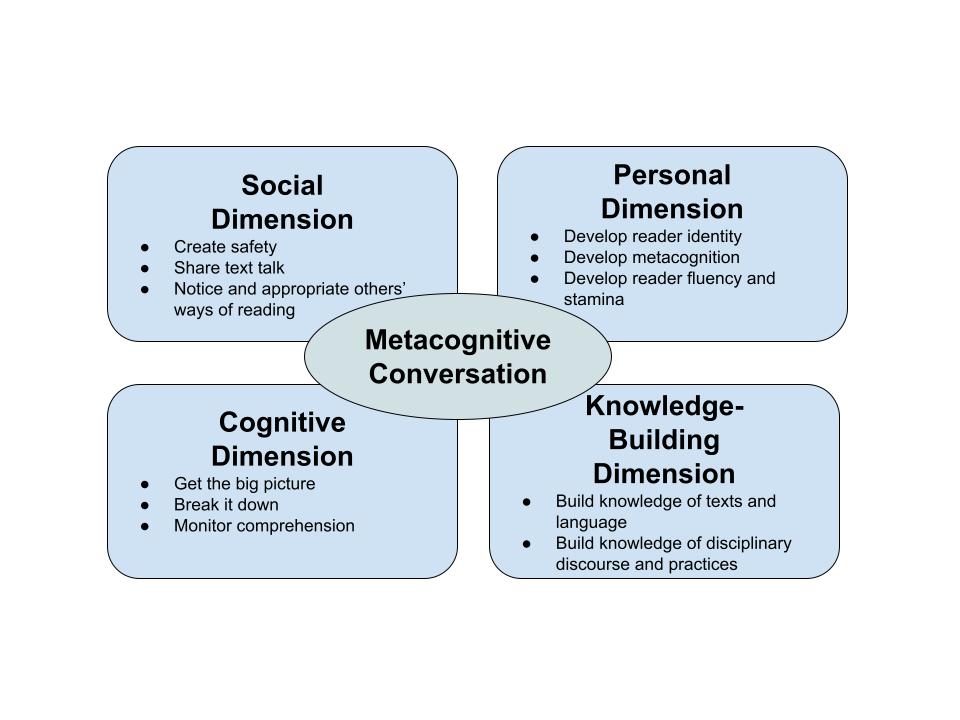- About MAA
- Membership
- MAA Publications
- Periodicals
- Blogs
- MAA Book Series
- MAA Press (an imprint of the AMS)
- MAA Notes
- MAA Reviews
- Mathematical Communication
- Information for Libraries
- Author Resources
- Advertise with MAA
- Meetings
- Competitions
- Programs
- Communities
- MAA Sections
- SIGMAA
- MAA Connect
- Students
- MAA Awards
- Awards Booklets
- Writing Awards
- Teaching Awards
- Service Awards
- Research Awards
- Lecture Awards
- Putnam Competition Individual and Team Winners
- D. E. Shaw Group AMC 8 Awards & Certificates
- Maryam Mirzakhani AMC 10 A Awards & Certificates
- Two Sigma AMC 10 B Awards & Certificates
- Jane Street AMC 12 A Awards & Certificates
- Akamai AMC 12 B Awards & Certificates
- High School Teachers
- News
You are here
Primary Source Projects and Reading Apprenticeship in Mathematics History: Reading Apprenticeship
The Reading Apprenticeship (RA) framework is an excellent tool to further support and scaffold explicit instruction in reading historical mathematics. In Reading for Understanding [2012], authors Ruth Schoenbach, Cynthia Greenleaf, and Lynn Murphy describe four key dimensions of classroom life that are necessary to foster reading development: social, personal, cognitive, and knowledge-building. At the center of these four dimensions is metacognitive conversation or, to put it simply, “thinking about thinking.” The framework includes a variety of versatile techniques, or “routines,” intended to engage students as readers and to develop discipline-specific reading skills.

Figure 5. Reading Apprenticeship Framework, adapted from WestEd 2023.
Reading Apprenticeship was first developed in the 1990s, when a group of secondary teachers and researchers in San Francisco began working together to find new ways to deepen student learning. They found that there were many interventions to help elementary-aged students develop reading skills, but few methods or resources existed for older students or for content-specific areas. The San Francisco group thus developed the RA framework from objectives and approaches that were supported by educational research and that addressed both academic and social-emotional learning [WestEd 2023]. Although RA was originally developed for use in secondary schools, it has been adapted to all educational levels, including universities. Currently, WestEd, a nonprofit educational research agency, supports the RA community and has facilitated implementation at scale as well as evaluation projects [WestEd 2023]. A three-year evaluation for the California Community Colleges reported promising impacts of RA in STEM courses, including reductions in equity gaps [Edmunds 2017].
One of the core tenets of RA is its adaptability to different contexts. Common routines that can be used across disciplines and student levels include: discussion logs, think-alouds, personal reading histories, talking to the text, and metacognitive logs. Guides for these routines are provided in WestEd’s two RA texts: Reading for Understanding: How Reading Apprenticeship Improves Disciplinary Learning in Secondary and College Classrooms [Schoenbach et al. 2012] and Leading for Literacy: A Reading Apprenticeship Approach [Schoenbach et al. 2016]. A well-written PSP gives mathematical and historical content together in a guided reading approach. Overlaying RA routines on a PSP’s written materials can provide students with concrete mechanisms for discerning mathematical and historical meaning from the primary source excerpts in a PSP. In other words, the role of RA routines is to facilitate students’ engagement with the PSP materials and with one another during classroom discussion.
Jennifer Clinkenbeard (California State University, Monterey Bay), "Primary Source Projects and Reading Apprenticeship in Mathematics History: Reading Apprenticeship," Convergence (November 2023)




